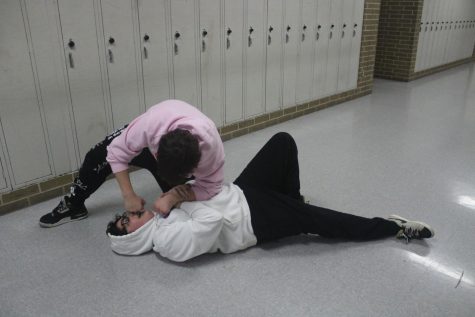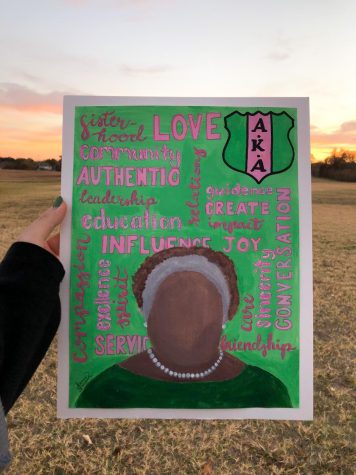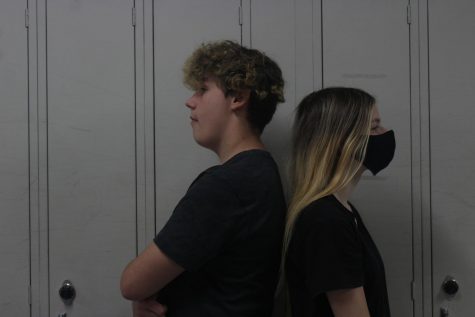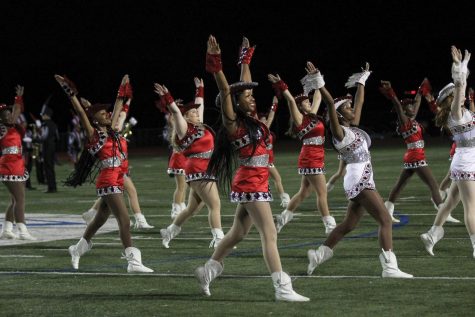Students adjust to face-to-face learning

November 6, 2020
Walk through the ghost town like halls at Martin. Only three kids per classroom. It makes you think, what happened? What went so wrong in the world to lead us to this. Here. To only having 30 percent of kids back in person. Having students prefer to be online. There are many kids who are in person but way more who chose to stay online, but why?
With Covid taking over our world more and more, school has been the hardest thing to adapt to for many students at Martin. Policies are changing daily and restrictions are being put in place here and there.
“There are almost no students in class, my biggest class is five people and that doesn’t give us a ton of opportunity to interact with teachers,” senior Evan Clark, who is attending face to face learning, said. “It limits the things we can do in class.”
The class numbers are small but not everyone seems to dislike it.
“My class numbers aren’t very high and that is better for less distractions,” junior Zaina Alyousef, who is also attending face to face learning, said.
“My average class is two to three people including me,” Clark said. “We don’t do anything, we don’t talk to each other, sometimes the teachers talk to us but that’s very rare.”
In-person students are not the only ones struggling with communication.
“One disadvantage is the amount of miscommunication there is,” junior Levi Banks, who is doing all online school said. “Being online makes it very hard to communicate with teachers and get the information you need.”
Communication is hard right now because even teachers don’t know if what they are doing is 100 percent correct, let alone the non-stop emails and Remind messages with questions about assignments.
AP English and history teacher Olivia Basham has been doing all of her classes from home even though classes in-person are occurring.
“I have a couple of autoimmune conditions and fortunately, the school has made it possible for me to work from home for the time being.”
“The class is not any harder because she is at home,” said junior Ryan Bone, who is in-person and has Basham for AP US History. “She actually looks at the assignments and stuff people are doing and assesses times and addresses emails. She pays attention to when the students are struggling and will alter assignments for that.”
Basham is an example of a teacher who continues to push through and help her students even with her health condition.
“My passing rates are not as good as usual,” Basham said. “But I am trying to find ways to reward students for doing things that I would normally not grade. Like giving combined grades for watching videos via online tools like EdPuzzle.”
Many regulations have been put in place in school to help prevent the spread of Covid while still allowing the students to get an education. Some of these restrictions and regulations include using hand sanitizer before and after every class, a health survey, temperature checks, social distancing, spread out lunches, and masks. While most of these make sense, the face to face learning students have some complaints.
“It is so depressing and almost surreal walking the halls and seeing no one and then going to lunch and not being able to sit with people,” senior Rian Macbride, who has switched from in-person back to online, said. “Lunch is a must change. It is the most depressing, unmotivated thing ever.”
Alyousef said she agrees.
“I don’t understand why we are spread apart next to each other but the person in front or behind me can easily sneeze on my neck and you could basically hear them breathing,” she said. “It is the worst.”
One of the precautions being put in place is using the school provided hand sanitizer before and after every class along with when you enter the building.
“I also wish you didn’t have to sanitize after getting to every class because it dries out my hands really bad,” Clark said. “I know that’s all about me but that’s something I wish would change.”
The students attending in-person learning still have to deal with the asynchronous and synchronous time that way there are no benefits or advantages to being in person vs online.
“It is unpleasant for everyone because all of [the] teachers want to do more interactions with our in-person students, but it isn’t fair to those students who opted for at home learning,” Forensics teacher Jose Espinoza said.
Because online students are not in person to speak about their opinions, they are focusing more on the Zoom and class timings.
“I’m not a huge fan of asynchronous vs synchronous time because for specific classes I really need it to all be synchronous, like for pre cal,” junior Jaden Holder said. “I really need the one on one with the teacher to explain how to do things.”
The virtual synchronous classes seem to be a pain for everyone though.
“I wish I could change the irregularity,” Banks said. “Some teachers use Zoom, others use Teams, then in Canvas, some teachers use announcements while other teachers use modules or assignments. It makes keeping up with assignments complicated and difficult.”
Even the students who attend in person have days where they are still at home so the loss and confusion with assignments are still prominent.
“One disadvantage is making sure you’re on pace with your assignments,” MacBride said.
“Not having teachers physically assign you to work a problem I never thought I’d have. There are so many ‘ghost assignments’ that you just appear to miss. Managing your time is much harder.”
Ask anyone who has attended face to face learning and they’ll tell you it is the exact same as online but with masks, and that seems to be holding people back from coming to face to face learning. Yes you still have to complete your assignments online and you have the occasional Zoom to log in to, but you get to meet and be with your teachers. Build connections with them. Ask questions. Get clarification.
“The biggest advantage the in-person students have is that they have a structured environment, and direct access to the teacher,” Espinoza said.
Alyousef even said that was the reason she has continued to stay in person.
“If I were at home I would have absolutely no motivation to do anything and I would get distracted very easily,” she said. “And you have the teacher right in front of you so it is easier to communicate if you have any questions.”
Of course, not all teachers are as approachable as others because of this Covid mess but you can still ask questions and the more and more students that show up in person, the more susceptible the teachers are to teaching students as if in a normal classroom environment.
Changes to the hybrid schedule are currently being discussed by the district. There is talk about switching asynchronous and synchronous time, changing it to 20 minutes asynchronous 50 minute synchronous then back to asynchronous, there is talk about getting rid of hybrid learning all together where all last names will be allowed on campus, and much more.
Education in these conditions is incredibly difficult as we have learned, but it can teach us something new for the future.
“The skills that both teachers and students are gaining right now will be leveraged and we will see much more seamless integration of online and in-person platforms in the future,” Basham said. “As students, parents, and teachers move forward with what works for them and leave behind what doesn’t.” 






Ruby Cisneros • Nov 13, 2020 at 12:36 pm
Totally agree with some of the quotes! Being at home is definitely stressful but still having to be on the computer at school is stressful as well. Some teachers using other programs gets confusing as well. Love your story!
Elle Forsythe • Nov 13, 2020 at 11:51 am
I love how you got so many in-depth interviews and how they show so many different opinions and angles. It also gives everyone, both in-person and online, what the school experience is like on the other side which is a good way for us to be mindful of our peers.
Molly Maddock • Nov 12, 2020 at 5:28 pm
I like how you had both positive and negative info!
Amanda Kohutek • Nov 6, 2020 at 1:03 pm
This is a great story which is really accurate to what the students are feeling. I think this is also great information to get for students who are online, so that they can decide whether they would want to come back in-person. Awesome job!
Claire • Nov 6, 2020 at 10:12 am
Jordan!!! Love this story! Great interviews